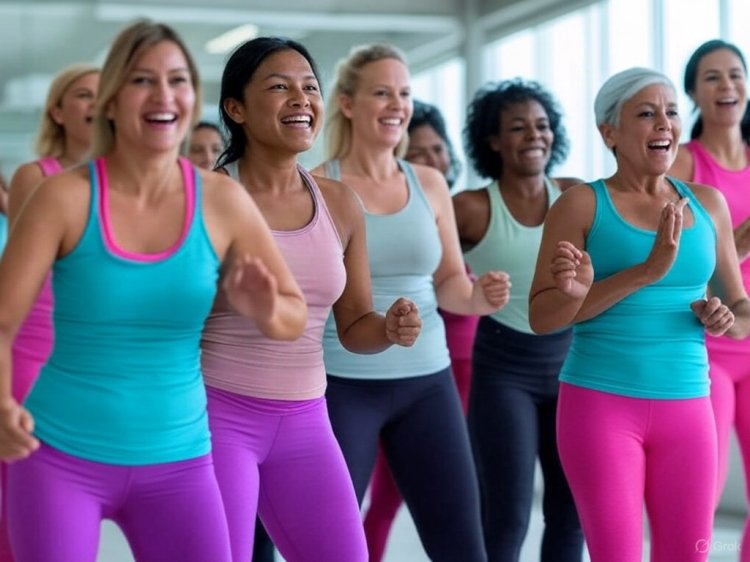Stretch Your Limits: Activities That Improve Flexibility and Fitness

Flexibility is one of the most overlooked components of fitness—but it’s also one of the most essential. Whether you’re an athlete, a weekend warrior, or just looking to move through life with more ease and less pain, flexibility plays a crucial role in how your body functions.
Improving your flexibility can lead to better posture, greater range of motion, fewer injuries, and improved performance in just about any physical activity. The good news? You don’t need to be a gymnast or a yoga master to get more flexible. With consistent practice and the right activities, anyone can improve their flexibility at any age or fitness level.
Here are some of the top activities that help increase flexibility—and how to get started.
1. Yoga: The Gold Standard
Yoga is one of the most popular and effective ways to improve flexibility. It combines movement, breath control, and deep stretching to lengthen muscles and increase mobility. Styles like Hatha and Yin yoga are especially great for flexibility, focusing on slow, sustained poses that stretch deep connective tissues.
Yoga also enhances body awareness, helping you recognize tight areas and move more mindfully. Over time, a regular yoga practice can improve spinal alignment, reduce joint stiffness, and prevent injuries.
Pro tip: Start with beginner-friendly classes or videos, and focus on consistency over intensity.
2. Dynamic Stretching
Unlike static stretching, which involves holding a stretch in place, dynamic stretching uses controlled, active movements to warm up the muscles and prepare them for activity. This type of stretching is ideal before workouts or sports, helping to increase blood flow and mobility.
Examples include leg swings, arm circles, walking lunges, and hip openers. These movements mimic athletic motions and improve flexibility while building coordination and strength.
Pro tip: Incorporate dynamic stretches into your warm-up routine for 5–10 minutes before any workout or sport.
3. Pilates: Core and Flexibility Combined
Pilates emphasizes controlled movements, alignment, and core strength—all while improving flexibility. The method targets both major and stabilizing muscles, helping you develop long, lean muscle and better posture.
Many Pilates exercises involve slow, fluid movements that stretch muscles while keeping them engaged. This dual action helps you become more limber while also building support and control throughout your joints.
Pro tip: Look for mat-based Pilates classes or online sessions that focus on flexibility and mobility.
4. Tai Chi and Qigong
These gentle, flowing martial arts practices from China focus on slow, deliberate movements that enhance balance, coordination, and flexibility. While they may not look intense, Tai Chi and Qigong improve joint mobility and reduce muscular stiffness—especially helpful for older adults or those recovering from injury.
They also reduce stress, which can cause muscle tightness and tension.
Pro tip: Try a local class or video session once or twice a week to complement other forms of exercise.
5. Foam Rolling and Myofascial Release
While not a traditional “activity,” foam rolling and self-myofascial release are powerful tools for improving flexibility. These techniques target the fascia—connective tissue that surrounds muscles—helping to break up knots, reduce stiffness, and improve tissue elasticity.
Using a foam roller or massage ball before or after workouts can increase range of motion and aid in recovery.
Pro tip: Focus on tight areas like calves, quads, IT bands, and shoulders. Roll slowly and breathe through any tension.
6. Dance and Movement-Based Fitness
Dance styles like ballet, contemporary, and even Zumba involve a wide range of motion, balance, and rhythmic flexibility. Regular participation improves muscle control and joint mobility, often without you even realizing you're stretching.
Pro tip: Don’t worry about being a pro dancer—just move, stretch, and have fun.
Summary: Key Activities That Improve Flexibility
-
Yoga – Enhances full-body flexibility through static and flowing poses
-
Dynamic stretching – Prepares muscles for movement and prevents injury
-
Pilates – Builds core strength while lengthening muscles
-
Tai Chi & Qigong – Gentle movements improve mobility and reduce tension
-
Foam rolling – Releases muscle tightness and boosts range of motion
-
Dance-based workouts – Improves flexibility with fun, fluid movements
Flexibility isn't just about touching your toes—it's about moving through life with more freedom, less pain, and greater control. By incorporating some of these activities into your weekly routine, you’ll see benefits not just in your workouts, but in how you feel every day. So go ahead—stretch your limits.